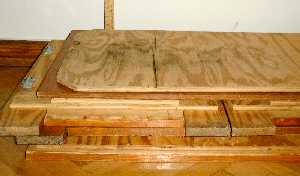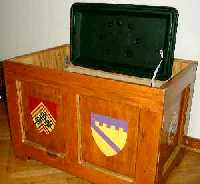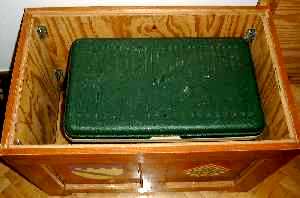Master Robyyan's article provides all the details, and the list of required materials, but I wanted to provide some additional photos of how the boxes look finished, how much space they have, and some assembly photos that may help if you find the article unclear.
| These chests breakdown and transport flat. You can see here that the pieces for the large chest, when stacked up, are not quite 6" high, and only 30" x 22" in area. |  |
 |
The chests are quite roomy. I use the large one to store (hide) my good cooler, and there is still left over space for storage of dry items. |  |